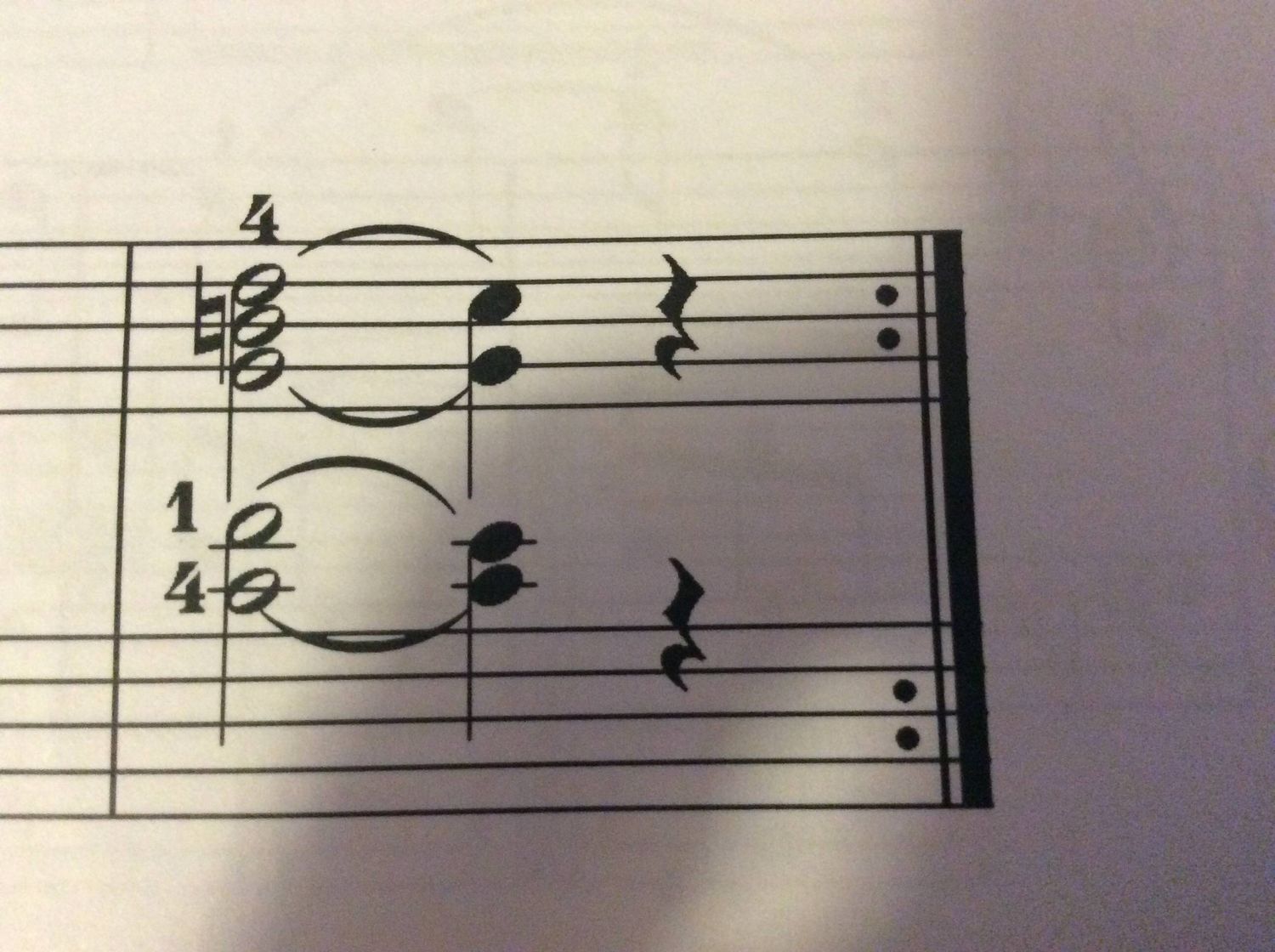Home>Production & Technology>Music Theory>How To Use Music Theory To Write A Song


Music Theory
How To Use Music Theory To Write A Song
Published: January 29, 2024
Learn how to write a captivating song using music theory techniques. Unleash your creativity with practical tips and guidance.
(Many of the links in this article redirect to a specific reviewed product. Your purchase of these products through affiliate links helps to generate commission for AudioLover.com, at no extra cost. Learn more)
Table of Contents
Introduction
Welcome to the world of music theory! If you’re a songwriter or aspiring musician, understanding music theory can greatly enhance your ability to create compelling and captivating songs. While some may view music theory as a daunting and complex subject, it is actually a valuable tool that can help you express your musical ideas with clarity and intention.
At its core, music theory is a system of rules and principles that govern the structure, composition, and performance of music. By learning and applying these fundamental concepts, you can unlock a world of possibilities in your songwriting process. Whether you’re composing melodies, building harmonies, or crafting intricate rhythms, a solid understanding of music theory will serve as your guide.
In this article, we will delve into the various aspects of music theory and explore how they can be effectively utilized in the songwriting process. From understanding the elements of a song to applying harmonic progressions, melody, and rhythm, we will cover key topics that will empower you to compose music that resonates with your audience.
Whether you’re a complete beginner or have some background in music theory, this article will provide you with a comprehensive and practical guide to using music theory in your songwriting journey. So, grab your instrument of choice and let’s dive in!
Understanding Music Theory
Before we can dive into using music theory in our songwriting, it’s crucial to have a solid understanding of its basic principles. Music theory is essentially the study of how music is organized and structured. It encompasses concepts such as pitch, rhythm, harmony, melody, and form.
One of the fundamental building blocks of music theory is the musical staff, a set of horizontal lines and spaces that represent different pitches. The placement of notes on the staff indicates their pitch, while the combination of different notes creates melodies and harmonies.
Rhythm is another crucial component of music theory. It refers to the arrangement of sounds and silences over time, creating the sense of pulse and groove in a song. Understanding rhythm allows us to create engaging and dynamic compositions that flow seamlessly.
Harmony, on the other hand, deals with the simultaneous sounding of different pitches. It explores the relationships between notes and chords, enabling us to create harmonic progressions that evoke different emotions and moods.
Melody is the aspect of music that is most easily recognizable and memorable. It is a sequence of single pitches that create a distinct musical line. Crafting an appealing melody is essential to capturing the attention and imagination of your listeners.
Lastly, form refers to the overall structure of a song. It dictates the arrangement and organization of different sections, such as verses, choruses, bridges, and outros. Understanding form can help you create cohesive and well-structured compositions that tell a musical story.
By assimilating these key components of music theory, you’ll gain a solid foundation to build upon in your songwriting journey. Next, we’ll explore how to apply these concepts to create compelling and cohesive songs.
Elements of a Song
A song is a combination of various musical elements that work harmoniously to create a cohesive and engaging piece of music. By understanding and harnessing these elements, you can craft songs that resonate with your audience and leave a lasting impact.
1. Lyrics: The lyrics are the words and phrases that convey the message and story of the song. Whether it’s a heartfelt love song or a powerful anthem, well-crafted lyrics can evoke emotions and connect with listeners on a deeper level.
2. Melody: The melody is the foundation of a song. It is a sequence of single pitches that create a memorable and catchy musical line. A strong melody is essential in capturing the attention of your audience and making your song memorable.
3. Harmony: Harmony refers to the combination of different pitches and chords that support the melody. It adds depth and richness to the song, creating a sense of tension and resolution. Understanding harmony allows you to create powerful chord progressions that enhance the emotional impact of your song.
4. Rhythm: Rhythm provides the pulse and groove of a song. It is the arrangement of sounds and silences over time. Whether it’s a driving beat or a subtle groove, rhythm gives your song its energy and helps create a compelling musical experience.
5. Structure: The structure of a song determines how its various sections, such as verses, choruses, and bridges, are arranged. It provides a framework that guides the listener through the song and keeps their interest. Understanding song structure helps you create a cohesive and well-paced composition.
6. Dynamics: Dynamics refer to the variations in volume and intensity throughout a song. From soft and delicate to loud and powerful, dynamics add dimension and emotion to your music. Mastering dynamics allows you to create contrast and impact within your song.
7. Instrumentation: The choice and arrangement of instruments in a song greatly impact its sound and character. From guitars and pianos to drums and orchestras, each instrument brings a unique texture and tone. Understanding instrumentation helps you effectively use different sounds to support and enhance your song.
By recognizing and utilizing these elements in your songwriting process, you can create music that engages and captivates your listeners. Each element plays a crucial role in shaping the overall feel and impact of your song. Understanding how these elements interact and complement each other will enable you to craft songs that resonate deeply with your audience.
Applying Music Theory to Songwriting
Now that we have a good understanding of the basic elements of music theory, let’s explore how we can apply this knowledge to our songwriting process. Utilizing music theory in songwriting allows us to make informed decisions and create compositions that are harmonically rich, melodically pleasing, and rhythmically captivating.
1. Harmonic Progressions: One of the key ways to apply music theory in songwriting is through the use of harmonic progressions. A harmonic progression is a sequence of chords that create a sense of tension and resolution. By following established chord progressions or experimenting with unique ones, you can add depth and emotion to your song.
2. Melody and Counterpoint: Crafting a strong melody is essential in creating a memorable song. By utilizing music theory principles such as scales, intervals, and phrasing, you can create melodic lines that are cohesive and pleasing to the ear. Additionally, considering counterpoint, the combination of multiple melodic lines, can enhance the complexity and richness of your composition.
3. Rhythm and Groove: The rhythm of a song plays a vital role in driving its energy and appeal. By incorporating rhythmic patterns, syncopation, and varied accents, you can create infectious grooves that make your listeners want to move and tap their feet. Experimenting with different rhythmic feels and techniques can add an exciting dimension to your song.
4. Song Structure: Understanding song structure enables you to create well-organized compositions that guide the listener through a musical journey. By employing common song structures such as verse-chorus-bridge or AABA, you can create familiarity and keep your listeners engaged. Alternatively, you can experiment with unconventional structures to create unique and avant-garde compositions.
5. Dynamics and Expression: Utilizing dynamics and expression in your songwriting adds depth and emotion to your music. By varying the volume, intensity, and articulation of your performance, you can create contrast and convey the intended mood of the song. Consider using crescendos, decrescendos, and expressive techniques to shape the dynamics of your composition.
As with any creative process, it is important to remember that music theory is a tool to guide you, not restrict you. While applying music theory principles can help you create well-crafted songs, allowing your creativity and intuition to guide you is equally important. Experimentation and personal expression should always be valued and encouraged in your songwriting journey.
By applying music theory to your songwriting, you can elevate your compositions to new heights. Whether you’re creating catchy pop tunes, heartfelt ballads, or experimental pieces, a strong foundation in music theory will enhance your ability to communicate and connect with your audience.
Harmonic Progressions
Harmonic progressions play a pivotal role in creating the emotional and structural foundation of a song. They are sequences of chords that provide a sense of tension and resolution, guiding the listener through the journey of a composition. Understanding harmonic progressions allows you to create chord sequences that are captivating, harmonically rich, and musically satisfying.
When constructing a harmonic progression, it’s helpful to consider the relationships between chords within a given key. In Western music theory, chords are built upon the notes of a scale, with each note serving as the root of a chord. For example, in the key of C major, the chords built on the notes of the C major scale would be C major, D minor, E minor, F major, G major, A minor, and B diminished.
One commonly used harmonic progression is the I-IV-V progression. In the key of C major, this progression would consist of the chords C major, F major, and G major. This progression provides a strong sense of resolution as the tension created by the IV and V chords (F major and G major) resolves back to the I chord (C major).
Another popular progression is the I-V-vi-IV progression, often referred to as the “pop progression.” In the key of C major, this progression would consist of the chords C major, G major, A minor, and F major. This progression has been used in countless hit songs and is known for its catchy and memorable quality.
While these progressions provide a starting point, don’t be afraid to explore and experiment with more complex and unique progressions. Music theory offers a wide range of possibilities, allowing you to infuse your compositions with your own creative touch.
Additionally, understanding chord inversions and voice leading can add depth and interest to your harmonic progressions. Chord inversions involve changing the order of the notes within a chord, resulting in different voicings and textures. Voice leading is the practice of smoothly transitioning from one chord to another by moving the individual voices of the chord in a melodic and logical manner.
It’s important to note that music theory is not a set of rigid rules, but rather a guide to help you craft your compositions. While using common progressions can create a sense of familiarity and comfort for listeners, feel free to experiment with unconventional progressions to create unique and innovative musical moments.
By delving into the world of harmonic progressions, you can enhance the emotional impact and musicality of your songs. Whether you’re aiming for a nostalgic sound, a melancholic atmosphere, or an uplifting vibe, understanding and utilizing harmonic progressions will help you create compositions that resonate deeply with your audience.
Melody and Counterpoint
In the realm of songwriting, melody serves as the main vehicle for musical expression. It is the sequence of single pitches that creates a memorable and distinct musical line. Crafting a strong and engaging melody can have a profound impact on the emotional impact and overall appeal of a song.
When creating a melody, it’s important to consider the underlying harmony and the tonal center of the song. By utilizing scales, intervals, and phrasing techniques, you can create melodic lines that are both pleasing to the ear and musically cohesive. Experimenting with different rhythms, note durations, and contour can add further interest and variety to your melody.
Counterpoint is another valuable tool that can elevate your songwriting. It refers to the combination of multiple melodic lines that are performed simultaneously and independently. By integrating counterpoint, you can create a more intricate and harmonically rich composition.
There are various approaches to counterpoint, but one commonly used technique is creating melodic lines that are melodically and rhythmically independent, yet synergistically harmonize with each other. This can be achieved by exploring the principles of consonance and dissonance, voice leading, and rhythmic interplay.
Moreover, understanding the concept of motifs can greatly enhance your melodic and contrapuntal compositions. A motif is a recurring musical idea or pattern that serves as a unifying element throughout a song. By incorporating motifs into your melodies and counterpoint, you can create coherence and connection within your composition.
When experimenting with melody and counterpoint, it is important to strike a balance between complexity and accessibility. While more intricate and complex melodies can be intriguing, it is crucial to ensure that the listener can still follow and connect with the music. Ultimately, the goal is to create melodies and counterpoint that are both captivating and memorable.
Remember, music theory is a guide, but allowing your creativity and intuition to guide you is equally important. Experimentation and personal expression should always be valued in your songwriting journey. Use music theory as a tool to expand your understanding and enhance your compositions, but let your unique voice and style shine through.
By focusing on creating compelling melodies and exploring the world of counterpoint, you can elevate your songwriting to new heights. Whether you’re aiming for a simple, catchy melody or a complex interplay of multiple melodic lines, understanding and applying the principles of melody and counterpoint will help you create songs that captivate and resonate with your audience.
Rhythm and Groove
When it comes to songwriting, rhythm is a fundamental element that drives the energy and movement of a composition. It is the arrangement of sounds and silences over time, and it plays a vital role in creating a sense of groove and capturing the listener’s attention.
Creating a strong rhythmic foundation involves exploring and experimenting with various rhythmic patterns, accents, and syncopation. Rhythmic patterns can be as simple as a steady beat or as complex as intricate polyrhythms. By incorporating different rhythmic elements, you can add depth and complexity to your song.
Syncopation is another valuable technique that can bring a sense of excitement and anticipation to your composition. It involves placing accents on unexpected beats or emphasizing off-beats, creating a syncopated rhythm that adds a dynamic and infectious quality to the music.
Moreover, varying the dynamics and articulation of your rhythm can enhance the overall impact of your song. Experimenting with accents, staccato notes, legato phrasing, and other expressive techniques can help shape the rhythm and create texture and nuance in your performance.
Groove is the captivating quality that makes people want to tap their feet or move to the rhythm of the music. It is the result of a well-crafted and infectious rhythmic feel. To create a groove, pay attention to the interaction between different rhythmic elements, such as the interplay between the drums, bass, and other instruments. Strive to find the pocket, the sweet spot where all the rhythmic components come together seamlessly.
Understanding rhythmic subdivisions and their relationships can also greatly enhance the depth and complexity of your rhythm. Experimenting with different subdivisions, such as triplets, sixteenth notes, or other rhythmic patterns, can create interesting rhythmic textures and variations.
Keep in mind that rhythm is not just limited to the percussive instruments in your song. All instruments, including vocals, can contribute to the rhythmic aspect of a composition. By carefully considering the way each instrument interacts with the rhythm, you can create a cohesive and powerful musical experience.
Ultimately, rhythm and groove are essential ingredients in crafting a memorable and engaging song. They provide the heartbeat of music and can greatly impact the emotional response of the listener. So don’t be afraid to experiment, explore different rhythmic patterns, and let the groove guide your songwriting process.
By embracing rhythm and mastering the art of creating a solid groove, you can create music that captivates and moves your audience. Whether it’s creating an infectious dance track or a soulful ballad, a strong command of rhythm and groove will bring your songs to life.
Song Structure
Understanding song structure is essential in creating compositions that are cohesive, well-paced, and engaging. It provides a framework that guides the listener through the various sections of a song, enabling them to follow the musical journey you have crafted. By incorporating a well-thought-out song structure, you can create a sense of familiarity and balance while also allowing room for creativity and surprises.
Commonly used song structures include the verse-chorus structure, ABAB structure, and the AABA structure. Let’s take a closer look at each of these:
1. Verse-Chorus Structure: This is perhaps the most popular and widely used song structure. It typically consists of alternating verses and choruses. The verses present the narrative of the song, while the chorus serves as the catchy and memorable section that is repeated throughout the song. This structure provides a sense of contrast and allows for the development and repetition of key musical and lyrical ideas.
2. ABAB Structure: In this structure, two contrasting sections, A and B, are alternated. The A section usually serves as the verse, while the B section often functions as the chorus or a bridge. This structure allows for the exploration of different musical ideas and adds variety and interest to the song.
3. AABA Structure: This structure consists of an initial A section, followed by a repeat of the A section, then a contrasting B section, and finally a return to the A section. This structure is often used in jazz standards and classic pop songs. The AABA structure provides a clear sense of narrative progression and can create a memorable and satisfying musical journey.
Beyond these common structures, there’s plenty of room for experimentation and creativity. You can incorporate pre-choruses, bridges, intros, and outros to add further complexity and interest to your song. The key is to find a structure that best suits the mood and message of your composition.
It’s important to note that song structure is not a set of rigid rules, but rather a flexible framework that can be adapted to serve the needs of your song. Feel free to experiment and bend the rules to create unique and captivating compositions that stand out.
Keeping the listener engaged is crucial in songwriting, and a well-structured song can help achieve this. By providing areas of contrast, creating memorable hooks, and strategically placing dynamic shifts, you can ensure that your song maintains the listener’s interest from beginning to end.
Ultimately, song structure is a tool that allows you to organize your musical ideas and create a cohesive and impactful composition. Understanding and utilizing these structures will enable you to craft songs that effectively convey your musical vision and resonate with your audience.
Conclusion
Congratulations! You have now embarked on a journey into the world of music theory and its application in songwriting. By understanding the elements of music theory, such as harmony, melody, rhythm, and structure, you can unlock a myriad of possibilities in your compositions.
Remember, music theory is not meant to stifle your creativity, but rather to serve as a guide and provide a solid foundation. It allows you to make informed decisions and deliberate choices in your songwriting process, ensuring that your musical ideas are effectively communicated to your audience.
Whether you are a beginner songwriter or someone with some experience, exploring music theory will undoubtedly enhance your songwriting skills. From creating captivating melodies to crafting harmonically rich progressions, each element of music theory plays a vital role in shaping the emotional impact and overall appeal of your songs.
Throughout this article, we have highlighted the importance of applying music theory to your songwriting process. We’ve discussed understanding harmonic progressions, crafting melodies and counterpoint, harnessing rhythm and groove, and structuring your songs effectively. By incorporating these principles into your compositions, you have the tools to create music that captivates, moves, and resonates with your audience.
While music theory provides a solid foundation, it’s also important to trust your instincts, tap into your creativity, and allow your unique voice to shine through. Embrace experimentation, explore new ideas, and don’t be afraid to think outside the box. The possibilities are limitless.
So, pick up your instrument, grab a pen and paper, or fire up your music production software. Use music theory to guide your songwriting process and unleash your musical potential. Let your passion, emotion, and imagination soar as you create songs that truly reflect who you are as an artist.
Remember, music is a universal language, and your songs have the power to touch hearts, inspire, and connect people from all walks of life. Embrace the art of songwriting, immerse yourself in the beauty of music theory, and let your creativity take flight. Happy songwriting!











